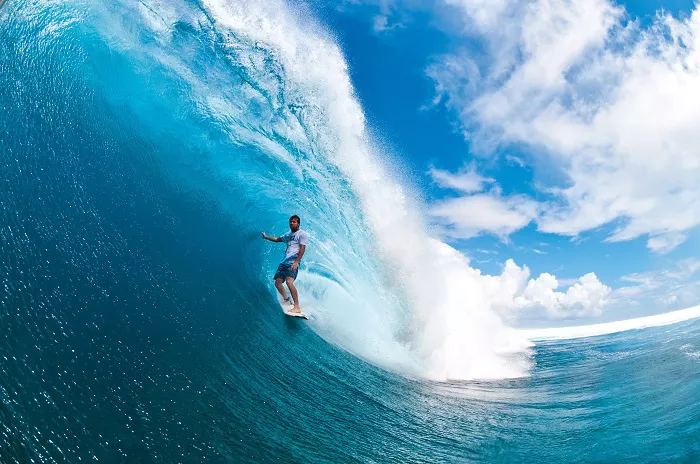Learning how to windsurf in waves can be both thrilling and intimidating. With the right techniques, preparation, and mindset, you can turn the challenge into an unforgettable windsurfing experience. This guide covers essential skills, safety tips, and step-by-step methods for mastering wave windsurfing, whether you are a beginner entering your first surf zone or an experienced rider looking to refine your moves.
Understanding Wave Windsurfing
Wave windsurfing involves riding a windsurf board over ocean swells, using the wind to control direction and speed. Unlike flatwater windsurfing, it requires more technical skills due to the constantly changing conditions of the ocean.
Choosing the Right Equipment
Using the correct gear is crucial for success. Select a wave-specific board. These boards are shorter, lighter, and have more rocker to handle breaking waves better. Choose a smaller, durable sail, around 3.5 to 5.5 square meters, to manage strong winds and surf impact.
Preparing for Wave Conditions
Check the weather and surf forecasts. Ideal wave windsurfing requires steady wind, preferably side-shore or side-offshore, and moderate waves. Avoid learning in huge swells. Understand local tides, currents, and potential hazards like rocks and reefs.
Essential Skills for Wave Windsurfing
Before heading into waves, master fundamental skills:
Waterstart reliably, even in rough conditions.
Upwind and downwind sailing with control.
Quick tacks and fast, confident gybes.
Strong board control in choppy waters.
Launching Through Waves
Timing is everything. Study the wave sets before launching. When a smaller set comes, carry your board to knee-deep water, aim directly into the waves, and waterstart quickly. Keep the sail low to avoid getting lifted by the wind and waves.
Getting Out Past the Break
Use your legs to absorb the impact as you hit whitewater. Push down on the tail of your board to lift the nose over oncoming foam. Bear away slightly downwind when climbing waves to maintain board speed and balance. Stay loose and flexible.
Handling Whitewater
As whitewater approaches, bear slightly upwind. Sheet out slightly to de-power your sail but stay engaged. Keep the board flat, and bend your knees deeply to absorb shock. Quick reflexes are key.
Positioning Beyond the Break
Once past the surf zone, head upwind to find a strategic position to catch a wave. Monitor incoming sets and position yourself where waves are steep but not closing out.
Riding Waves: Techniques
Wave riding blends sailing and surfing skills. As a wave approaches, bear off downwind to catch its energy. Focus on these movements:
- Drop-in at a sharp angle to match the wave’s speed.
- Shift your weight slightly back to keep the nose up.
- Use rail pressure and sail trimming to carve bottom and top turns.
- On the bottom turn, look toward where you want to go.
- During the top turn, depower slightly to control speed and redirect.
Jumping Waves
Approach small to moderate waves at moderate speed. As you hit the lip, sheet in slightly, bend your knees, and pop the board upward. Control your flight by sheeting out slightly in the air and keeping your gaze forward.
Landing Safely
As you land from a jump or drop down the face of a wave, bend your knees deeply to absorb the impact. Keep the board flat and your body low to maintain stability.
Returning to Shore
Plan your return during a lull between wave sets. Surf smaller waves back to shore with control. Stay alert to shifting waves and currents. When near the shore, jump off and walk your gear in carefully to avoid damage.
Common Mistakes to Avoid
Launching into big waves unprepared.
Rigging sails too large for conditions.
Overloading the front foot when riding waves.
Failing to read wave sets properly.
Ignoring local knowledge and surf etiquette.
Improving Your Wave Windsurfing
Progress comes from practice and observation. Watch other wave sailors. Analyze their techniques. Record your sessions when possible. Get lessons from experienced instructors, especially to learn advanced moves like forward loops and aerials.
Advanced Tips for Experienced Windsurfers
Practice “wave selection” to pick the right waves to ride.
Learn to bottom turn hard with maximum speed and power.
Master cutbacks and off-the-lip maneuvers.
Work on transitions between jumps and rides without losing speed.
Staying Safe While Wave Windsurfing
Always wear a helmet and impact vest. Use a shorter harness line setup for better control. Surf in areas suited to your level.
Respect surf etiquette — windsurfers must avoid interfering with surfers and prioritize right-of-way rules.
Recommended Training Routines
Build leg and core strength through exercises like squats, lunges, and planks. Improve balance with wobble board training.
Practice short sprints to simulate explosive bursts needed for wave launching and riding.
Destinations for Great Windsurfing Experience
For an unforgettable windsurfing experience, visit top spots like Maui’s Ho’okipa Beach, Cape Town’s Big Bay, or Tarifa in Spain. These places offer consistent waves, strong winds, and vibrant windsurfing communities.
Conclusion
Learning how to windsurf in waves takes patience, resilience, and a love for challenge. By understanding the basics, investing time in preparation, and practicing consistently, you can unlock an exhilarating new dimension of windsurfing. Every wipeout and success adds to your ultimate windsurfing experience.

